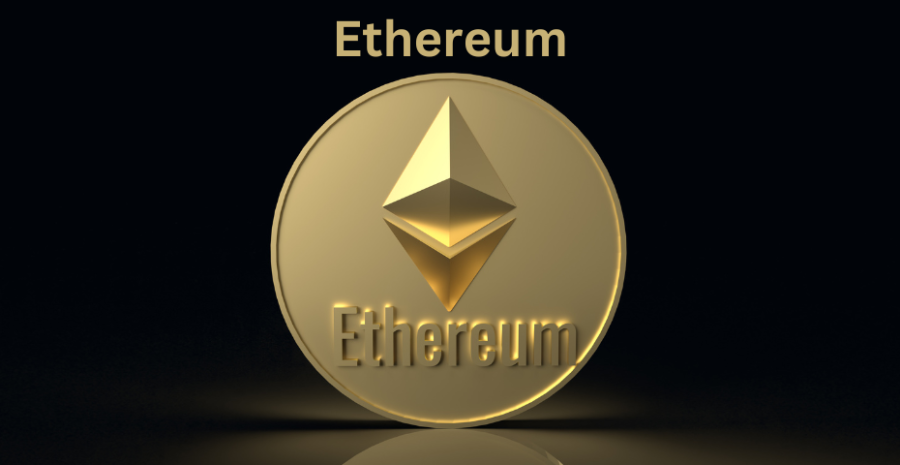
Introduction to Prominent Cryptocurrencies: Understanding the Landscape.

Introduction:
In recent years, the world of finance has witnessed a seismic shift with the emergence of cryptocurrencies, digital assets that utilize cryptographic techniques to secure financial transactions and control the creation of new units. At the forefront of this revolution are several prominent cryptocurrencies that have captured global attention and investor interest.
These digital currencies, including Bitcoin, Ethereum, and Binance Coin, among others, represent not only a new form of money but also a paradigm shift in how we perceive and interact with financial systems. The landscape of prominent cryptocurrencies is dynamic and multifaceted, encompassing a diverse range of projects, technologies, and philosophies.
From the pioneering role of Bitcoin as a decentralized peer-to-peer currency to the smart contract capabilities of Ethereum, each cryptocurrency brings its unique features and value propositions to the table. Moreover, the significance of these cryptocurrencies extends beyond mere financial transactions, with implications for decentralization, privacy, and innovation in various industries.
Understanding the landscape of prominent cryptocurrencies requires delving into their underlying technology, market dynamics, regulatory environment, and broader societal implications. As these digital assets continue to gain traction and mainstream acceptance, navigating this complex landscape becomes increasingly crucial for investors, businesses, and policymakers alike.
Thus, this introduction sets the stage for a comprehensive exploration of the multifaceted world of prominent cryptocurrencies and their transformative potential in shaping the future of finance and beyond. The world of cryptocurrencies has evolved rapidly, with numerous digital assets gaining prominence in recent years. Understanding this landscape is crucial for anyone looking to delve into the exciting realm of decentralized finance.
1. Bitcoin:

As the pioneer of cryptocurrencies, Bitcoin remains the most well-known and widely adopted digital currency, serving as a store of value and a hedge against inflation. Bitcoin, the flagship cryptocurrency, has transcended its origins as a mere digital currency to become a global phenomenon and a symbol of the decentralized revolution.
Launched in 2009 by the pseudonymous Satoshi Nakamoto, Bitcoin operates on a decentralized network of nodes, making it resistant to censorship and control by any single entity. Its limited supply of 21 million coins ensures scarcity and serves as a hedge against inflation, attracting investors seeking a store of value in turbulent economic times.
Bitcoin's underlying blockchain technology enables secure and transparent peer-to-peer transactions, eliminating the need for intermediaries such as banks or payment processors. Despite its volatile price history, Bitcoin has proven remarkably resilient, with its market capitalization often exceeding that of many traditional financial institutions. Its adoption as a legitimate asset class by institutional investors and corporations has further solidified its position as a viable investment and a hedge against traditional financial markets.
Moreover, Bitcoin has sparked a wave of innovation in the cryptocurrency space, inspiring the creation of thousands of alternative digital assets and blockchain projects. As Bitcoin continues to capture mainstream attention and acceptance, its influence on the future of finance and technology remains profound and far-reaching.
Bitcoin's next halving event, scheduled to occur approximately every four years, is anticipated with great interest and speculation within the cryptocurrency community. During a halving, the reward for mining new Bitcoin blocks is halved, reducing the rate at which new coins are introduced into circulation. This event is programmed into Bitcoin's protocol to ensure its scarcity over time, mirroring the supply dynamics of precious metals like gold.
Historically, Bitcoin halvings have been associated with significant price rallies, as the reduced supply often leads to increased demand and upward pressure on prices. Analysts and investors closely monitor these events, anticipating their potential impact on Bitcoin's price and market dynamics.
2. Ethereum:

Ethereum revolutionized the cryptocurrency space with its smart contract functionality, enabling developers to build decentralized applications (DApps) and launch new tokens through Initial Coin Offerings (ICOs) and Decentralized Finance (DeFi) platforms.
Ethereum, often hailed as the "world computer," is a decentralized platform that enables developers to build and deploy smart contracts and decentralized applications (DApps). Launched in 2015 by Vitalik Buterin and other co-founders, Ethereum introduced a groundbreaking concept that went beyond Bitcoin's digital currency use case. Smart contracts on Ethereum allow for programmable and self-executing agreements, revolutionizing various industries, including finance, gaming, and supply chain management.
The platform's native cryptocurrency, Ether (ETH), serves as fuel for transactions and computations on the Ethereum network. Ethereum's innovative features, such as its Turing-complete scripting language and robust developer ecosystem, have made it a driving force in the blockchain space. The Ethereum community is known for its vibrant and collaborative nature, with developers continuously working on improving the platform's scalability, security, and usability.
Ethereum's transition to a proof-of-stake consensus mechanism with the Ethereum 2.0 upgrade aims to address scalability issues and reduce energy consumption, making the network more sustainable and efficient. With its wide-ranging applications and ongoing development efforts, Ethereum remains at the forefront of innovation in decentralized technology, poised to shape the future of finance and beyond.
All good things come at a cost—and in this case, skyrocketing prices across the crypto market have also triggered an equally steep rise in Ethereum gas fees.
3. Binance Coin (BNB):
.jpg)
Binance Coin is the native cryptocurrency of the Binance exchange, offering utility within the Binance ecosystem, including trading fee discounts and participation in token sales. Binance Coin (BNB) is the native cryptocurrency of the Binance exchange, one of the largest and most popular cryptocurrency exchanges in the world. Launched in 2017 as part of the Binance Initial Coin Offering (ICO), BNB initially served as a utility token within the Binance ecosystem, providing users with discounted trading fees and other benefits.
Over time, Binance has expanded the use cases for BNB, including token burns, decentralized finance (DeFi) initiatives, and participation in token sales on the Binance Launchpad platform. BNB's utility extends beyond the Binance exchange, with integrations into various third-party platforms, wallets, and applications. The Binance Smart Chain (BSC), launched in 2020, further boosted BNB's utility by providing a high-performance blockchain platform for decentralized applications and smart contracts.
As a result, BNB has seen significant growth in adoption and value, cementing its position as one of the leading cryptocurrencies in the market. With Binance's continued innovation and expansion efforts, BNB is poised to play an increasingly vital role in the broader cryptocurrency ecosystem.
4. Cardano (ADA):
.png)
Cardano is a blockchain platform known for its focus on security and scalability, aiming to provide a more sustainable and inclusive ecosystem for DApps and smart contracts. Cardano (ADA) is a blockchain platform founded by Charles Hoskinson, one of the co-founders of Ethereum, with the aim of providing a more secure and scalable infrastructure for decentralized applications (DApps) and smart contracts.
Launched in 2017, Cardano distinguishes itself through its rigorous academic approach and emphasis on peer-reviewed research, ensuring high levels of security and reliability. The platform is built on a layered architecture, separating the settlement layer (Cardano Settlement Layer - CSL) from the computational layer (Cardano Computation Layer - CCL), which enhances scalability and allows for easier protocol upgrades.
Cardano's consensus mechanism, known as Ouroboros, is based on a proof-of-stake (PoS) algorithm, which requires significantly less energy compared to proof-of-work (PoW) systems, making it more environmentally friendly. ADA, the native cryptocurrency of the Cardano network, is used for transactions, staking, and participating in the governance of the platform.
Cardano's vision extends beyond financial applications, aiming to address real-world problems in areas such as identity management, supply chain tracking, and decentralized governance. With a strong focus on interoperability, sustainability, and scalability, Cardano is poised to become a leading blockchain platform for the future of decentralized innovation.
5. Solana (SOL):
.png)
Solana is a high-performance blockchain platform known for its fast transaction speeds and low fees, making it attractive for DeFi applications and Non-Fungible Token (NFT) marketplaces. Solana (SOL) is a high-performance blockchain platform designed to support decentralized applications (DApps) and crypto-native projects with fast transaction speeds and low fees.
Launched in 2020, Solana aims to address scalability issues faced by other blockchain networks by utilizing a unique consensus mechanism called Proof of History (PoH) combined with Proof of Stake (PoS). This innovative approach enables Solana to achieve transaction throughput of up to 65,000 transactions per second, making it one of the fastest blockchain networks in the industry. SOL, the native cryptocurrency of the Solana network, is used for transactions, staking, and participating in network governance.
The platform's low transaction fees and high throughput make it particularly suitable for decentralized finance (DeFi) applications, non-fungible token (NFT) marketplaces, and high-frequency trading. Solana has garnered significant attention and adoption within the crypto community, attracting projects and developers looking for scalable and efficient blockchain solutions. With its robust infrastructure and growing ecosystem, Solana is poised to play a key role in shaping the future of decentralized finance and Web3 applications.
6. Polkadot (DOT):
.png)
Polkadot aims to enable interoperability between different blockchains, allowing them to share information and assets securely, fostering a more connected and scalable blockchain ecosystem. Polkadot (DOT) is a blockchain platform founded by Dr. Gavin Wood, co-founder of Ethereum, aiming to facilitate interoperability between different blockchains and enable a decentralized web (Web3).
Launched in 2020, Polkadot introduces a novel approach to blockchain architecture, utilizing a multi-chain framework called parachains, which are independent blockchains connected to the main Polkadot relay chain. This design allows for greater scalability, security, and flexibility compared to traditional blockchain networks. DOT, the native cryptocurrency of the Polkadot ecosystem, serves multiple purposes, including governance, staking, and bonding parachains.
Polkadot's governance model is based on a decentralized autonomous organization (DAO), allowing DOT holders to participate in the decision-making process for protocol upgrades and network governance. The platform's interoperability capabilities enable seamless communication and data transfer between different blockchains, fostering innovation and collaboration across the decentralized ecosystem.
With its focus on scalability, interoperability, and governance, Polkadot has attracted a diverse array of projects and developers, positioning itself as a leading infrastructure for building the next generation of decentralized applications and services. As the Polkadot ecosystem continues to evolve and expand, DOT is poised to play a pivotal role in shaping the future of the decentralized web.
7. Chainlink (LINK):
.png)
Chainlink is a decentralized oracle network that connects smart contracts with real-world data, enabling them to interact with external information securely and reliably. Chainlink (LINK) is a decentralized oracle network that connects smart contracts with real-world data, enabling them to interact with external information securely and reliably. Launched in 2017 by Sergey Nazarov and Steve Ellis, Chainlink addresses a critical limitation of smart contracts by providing a decentralized solution for accessing off-chain data.
The platform utilizes a network of independent node operators, known as oracles, to fetch and verify data from various off-chain sources, such as APIs, data feeds, and external systems. LINK, the native cryptocurrency of the Chainlink network, is used to incentivize node operators to provide accurate data and ensure the integrity of the oracle network. Chainlink's decentralized oracle infrastructure has garnered significant adoption across various industries, including decentralized finance (DeFi), insurance, gaming, and supply chain management.
Its secure and tamper-proof data delivery mechanism enables smart contracts to execute complex logic based on real-time and external data inputs, unlocking a wide range of use cases and applications. With its robust architecture, strong community support, and growing network of partnerships, Chainlink is poised to remain a fundamental building block of the decentralized ecosystem, facilitating trustless and seamless interactions between smart contracts and the real world.
8. Litecoin (LTC):
.png)
Litecoin is a peer-to-peer cryptocurrency that facilitates fast and low-cost transactions, often regarded as the "silver" to Bitcoin's "gold." Litecoin (LTC) is a peer-to-peer cryptocurrency that was created by Charlie Lee in 2011 as a fork of the Bitcoin protocol. Designed to complement Bitcoin rather than compete with it, Litecoin aims to facilitate fast and low-cost transactions for everyday use.
With a block generation time of just 2.5 minutes (four times faster than Bitcoin), Litecoin offers quicker confirmation times, making it ideal for smaller transactions and day-to-day payments. The cryptocurrency also boasts a different hashing algorithm (Scrypt) compared to Bitcoin's SHA-256, which allows for more accessible mining on consumer-grade hardware and contributes to a more decentralized network.
LTC, the native cryptocurrency of the Litecoin network, is used for peer-to-peer transactions, remittances, and as a store of value. Despite facing competition from newer cryptocurrencies, Litecoin has maintained its relevance and popularity, thanks to its established track record, strong community support, and active development. With ongoing efforts to enhance privacy, scalability, and interoperability, Litecoin continues to evolve and adapt to meet the changing needs of its users and remain a prominent player in the cryptocurrency space.
9. Ripple (XRP):
%20(1).png)
Ripple provides a digital payment protocol for fast and low-cost cross-border transactions, primarily targeting financial institutions and banks. Ripple (XRP) is a digital payment protocol and cryptocurrency created by Ripple Labs Inc. in 2012 with the goal of revolutionizing cross-border payments and remittances. Unlike many other cryptocurrencies, XRP does not rely on blockchain mining; instead, all XRP tokens were pre-mined, with a total supply capped at 100 billion.
The Ripple protocol facilitates fast and cost-effective transactions, with settlement times of just a few seconds and minimal transaction fees, making it particularly attractive for international money transfers. Ripple's consensus mechanism, known as the Ripple Protocol Consensus Algorithm (RPCA), enables secure and decentralized validation of transactions by a network of trusted validators. XRP, the native cryptocurrency of the Ripple network, serves as a bridge currency for facilitating cross-border transactions and liquidity provision.
Despite facing regulatory challenges and legal scrutiny in some jurisdictions, Ripple has gained significant traction in the financial industry, with partnerships and collaborations with banks, payment providers, and financial institutions worldwide.
The RippleNet network, which leverages XRP for liquidity and on-demand liquidity (ODL) services, has streamlined international payments and reduced settlement times, benefiting both businesses and consumers. With its focus on efficiency, scalability, and interoperability, Ripple continues to innovate in the realm of global payments, striving to create a more inclusive and accessible financial system for all.
10. Hivecoin ( HVC):
.jpg)
Hivecoin, associated with the Markethive platform, is a newcomer in the cryptocurrency space, poised to revolutionize the world of digital marketing and social networking. Launched by Markethive founder Thomas Prendergast, Hivecoin aims to incentivize user engagement and participation within the Markethive ecosystem.
Built on blockchain technology, Hivecoin leverages a unique Proof of Engagement (POE) algorithm, rewarding users for their contributions to the platform, such as content creation, sharing, and interactions. The decentralized nature of Hivecoin ensures transparency, security, and fairness, fostering a vibrant and collaborative community of marketers, entrepreneurs, and content creators.
With its innovative approach to incentivizing user engagement, Hivecoin has the potential to disrupt traditional advertising models and empower individuals to monetize their online activities. The Markethive platform, powered by Hivecoin, offers a suite of marketing tools, social networking features, and educational resources, providing users with a comprehensive ecosystem for building and promoting their businesses.
As Hivecoin gains traction and adoption, it has the opportunity to become a leading cryptocurrency for digital marketing and social media, driving innovation and empowerment in the online world.
Conclusion:
As the cryptocurrency landscape continues to evolve, staying informed about prominent digital assets and their underlying technologies is essential for navigating this rapidly changing and innovative ecosystem. Whether you're an investor, developer, or enthusiast, understanding the landscape of prominent cryptocurrencies opens up exciting opportunities for participation and growth in the decentralized future of finance.
Understanding the market dynamics of prominent cryptocurrencies involves analyzing factors such as market capitalization, trading volume, and price volatility to make informed investment decisions.

About: Andries vanTonder
Over 40 years selfemployed
He is a Serial Entrepreneur, an Enthusiastic supporter of Blockchain Technology and a Cryptocurrency Investor.
Connet with me: Markethive Profile Page | My Twitter Account | My Instagram Acount | and my Facebook Profile.
